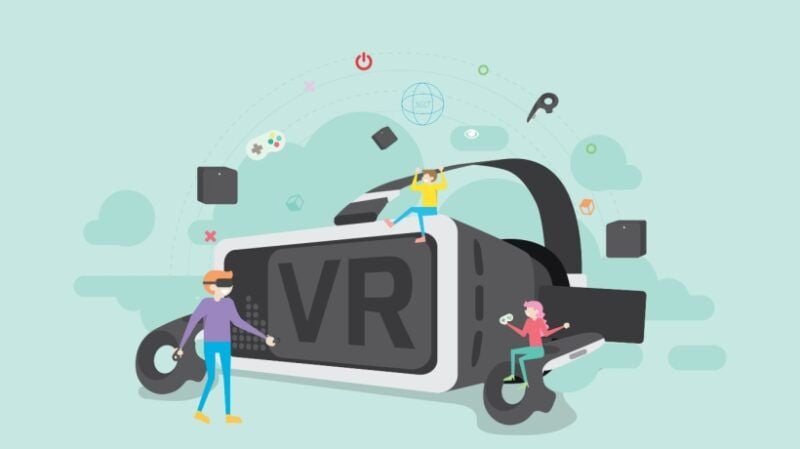VR-Based Gamification: Elevating Employee Training


Learn Actionable Strategies To Integrate VR
As organizations adopt new technologies, Virtual Reality (VR) combined with gamification is becoming a powerful tool for Learning and Development (L&D) professionals. By immersing employees in realistic, interactive environments, VR-based gamification enhances learning engagement and retention, particularly during onboarding and complex skills training. This approach allows learners to practice tasks in a simulated setting, increasing their confidence and competence without the risks associated with real-world scenarios. This article will explore how VR-based gamification transforms corporate training and provide practical insights for implementing it within your organization.
Tips On Using VR-Based Gamification To Transform Corporate Training
1. Immersive Learning Environments For Onboarding
Traditional onboarding often struggles to engage new hires, leading to knowledge retention and job readiness gaps. VR-based gamification solves this by creating immersive learning environments where new employees can experience real-world scenarios in a controlled, risk-free setting. This approach makes onboarding more interactive and practical, helping employees gain hands-on experience. Here are some practical steps to take:
- Create VR simulations for job tasks
Develop VR modules that replicate employees’ daily tasks in their roles. For example, VR can simulate customer interactions or complex machinery operations in retail or manufacturing, allowing employees to practice before they start the job. - Incorporate gamification elements
Add gamified features like points, badges, or leaderboards to make the learning experience more engaging. This encourages employees to participate actively and motivates them to complete onboarding tasks. - Measure onboarding success with VR
Use the data collected from VR simulations to track new hires’ progress and identify areas where they may need additional support or training.
By simulating real-world tasks, VR-based onboarding can dramatically improve learning retention and help new hires become job-ready faster.
2. Gamification For Skill Development And Engagement
Beyond onboarding, VR-based gamification is highly effective for ongoing skill development. Employees can practice new skills in a gamified VR environment, where they are rewarded for achieving milestones, completing challenges, or improving their performance. This immersive training method engages employees, helping them master complex tasks in a low-pressure environment. Here are some practical steps you can take:
- Implement role-specific VR simulations
For technical roles such as engineers or healthcare professionals, create VR simulations that allow employees to practice complex procedures. This not only improves skills but also helps in retaining critical knowledge over time. - Introduce game-like challenges
Design learning modules that reward employees for completing tasks within the simulation. For instance, introduce time-based challenges or accuracy rewards that mirror the pressures of real-world performance, encouraging employees to sharpen their skills. - Use VR to simulate crisis management
In industries like finance or public relations, where employees must react quickly, VR-based gamification can simulate high-pressure situations, allowing employees to practice and hone their decision-making skills without real-world consequences.
This type of active learning helps employees retain more information than passive training methods like reading or watching videos. Gamification adds an element of fun, making learning more engaging and less stressful.
3. VR-Based Gamification For Compliance And Safety Training
One of the most valuable applications of VR-based gamification is in compliance and safety training, where making mistakes in the real world can have significant consequences. VR allows employees to engage in safety drills, compliance exercises, or regulatory procedures in a safe, controlled environment. By adding game-like elements, such as point systems or badges for correctly completing tasks, employees are more motivated to engage with and retain critical safety information. Here are some practical steps you can take:
- Develop safety simulations
Create VR experiences where employees can practice responding to emergencies, such as fire drills or equipment malfunctions. This helps them understand safety protocols in a real way without any danger. - Incorporate compliance challenges
In sectors like healthcare, finance, or manufacturing, gamify compliance training by introducing VR-based quizzes and interactive challenges. Employees can earn points or rewards for accurately completing compliance tasks, such as identifying hazards or adhering to industry regulations. - Monitor performance in real time
With VR-based training, L&D professionals can track employees’ performance in safety or compliance scenarios and offer additional support where needed.
This approach enhances engagement and ensures that employees are better prepared to handle compliance and safety issues in real-life situations.
4. Boosting Engagement And Retention With VR Gamification
One of the biggest challenges L&D professionals face is keeping employees engaged in training programs. Traditional methods like lectures or eLearning modules often fail to capture attention or drive engagement. VR-based gamification solves this problem by creating highly immersive, interactive learning experiences that employees enjoy and want to return to. Here are some practical steps to take:
- Gamify the learning process
Use elements like points, leaderboards, and rewards to motivate employees throughout their learning journey. Employees can compete against themselves or their peers, which encourages a sense of achievement and progress. - Create immersive role-playing scenarios
Design VR scenarios where employees can take on different organizational roles. This allows them to practice empathy, communication, and leadership skills in realistic, gamified environments. - Encourage continuous learning with rewards
Set up gamification mechanics that reward employees for constant Learning and Development. For instance, employees can earn badges or certificates for completing specific VR modules, which can be tied to career advancement opportunities.
By making learning fun and competitive, VR-based gamification increases participation and helps employees retain more of what they learn, improving overall training outcomes.
5. Measuring The Success Of VR-Based Gamified Training
One of the advantages of VR-based gamification is the ability to track and measure learner performance in real time. L&D professionals can use data from VR simulations to gain insights into how well employees are progressing, where they excel, and where they may need additional support. Here are some practical steps to take:
- Use real-time analytics
Collect data on how employees perform in VR simulations, such as task completion times, accuracy rates, or decision-making under pressure. This data provides insights into areas where additional training may be needed. - Assess learning retention
After completing VR-based training, use follow-up quizzes or assessments to measure how well employees retain information. Compare these results to traditional training methods to assess VR’s effectiveness. - Link gamified training to performance metrics
Track how VR-based training impacts real-world performance. For instance, measure whether employees who completed VR safety simulations had fewer accidents or those who engaged in VR-based sales training closed more deals.
By leveraging the data generated through VR gamified training, L&D professionals can continuously improve their programs and demonstrate a clear Return On Investment (ROI).
The Future Of Training With VR-Based Gamification
VR-based gamification is set to revolutionize Learning and Development by offering immersive, engaging, and practical training experiences. As companies increasingly adopt hybrid and remote work models, VR-based learning provides a unique opportunity to train employees in environments that simulate real-world challenges without the associated risks. By blending the principles of gamification—such as competition, rewards, and leaderboards—with the immersive power of Virtual Reality, L&D professionals can create training programs that are both enjoyable and effective.
Why VR-Based Gamification Is The Future Of Training
- Enhanced engagement and retention
Employees are more likely to stay focused and invested when they learn in a gamified, immersive environment. This leads to higher retention rates and better overall performance. Unlike traditional eLearning or lecture-based training, VR gamification keeps learners active and engaged, improving their understanding and application of the material. - Improved real-world application
Employees gain confidence in their abilities by practicing in realistic simulations, making them better prepared for real-world tasks. Whether simulating crisis management, learning new machinery, or practicing customer service interactions, VR allows employees to make mistakes and learn from them in a safe environment. - Quantifiable success
One key benefit of VR-based training is the ability to track employee performance in real time. This provides valuable data on learning outcomes, helping L&D professionals optimize training programs and demonstrate a clear ROI. Organizations can refine their learning strategies and ensure long-term success by measuring metrics such as task completion rates, learning retention, and real-world performance improvements.
Conclusion: The Future Is Here
As technology advances, VR-based gamification will become essential to training and development strategies. Engagement and real-world simulation offer unmatched learning opportunities, while data analytics provide insight into employee progress. L&D professionals who embrace this innovative approach will not only improve training outcomes but also keep their workforce prepared for the challenges of the future. Now is the time to explore how VR-based gamification can be integrated into your organization’s learning programs to create more immersive, engaging, and impactful training experiences.
Source link


